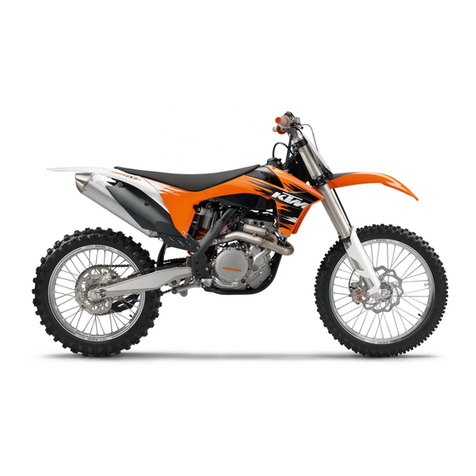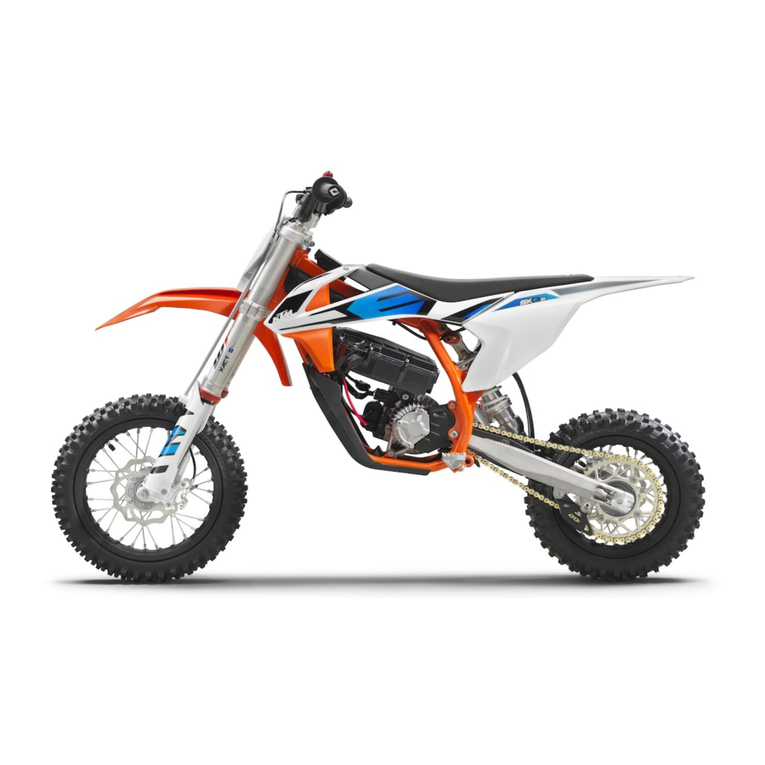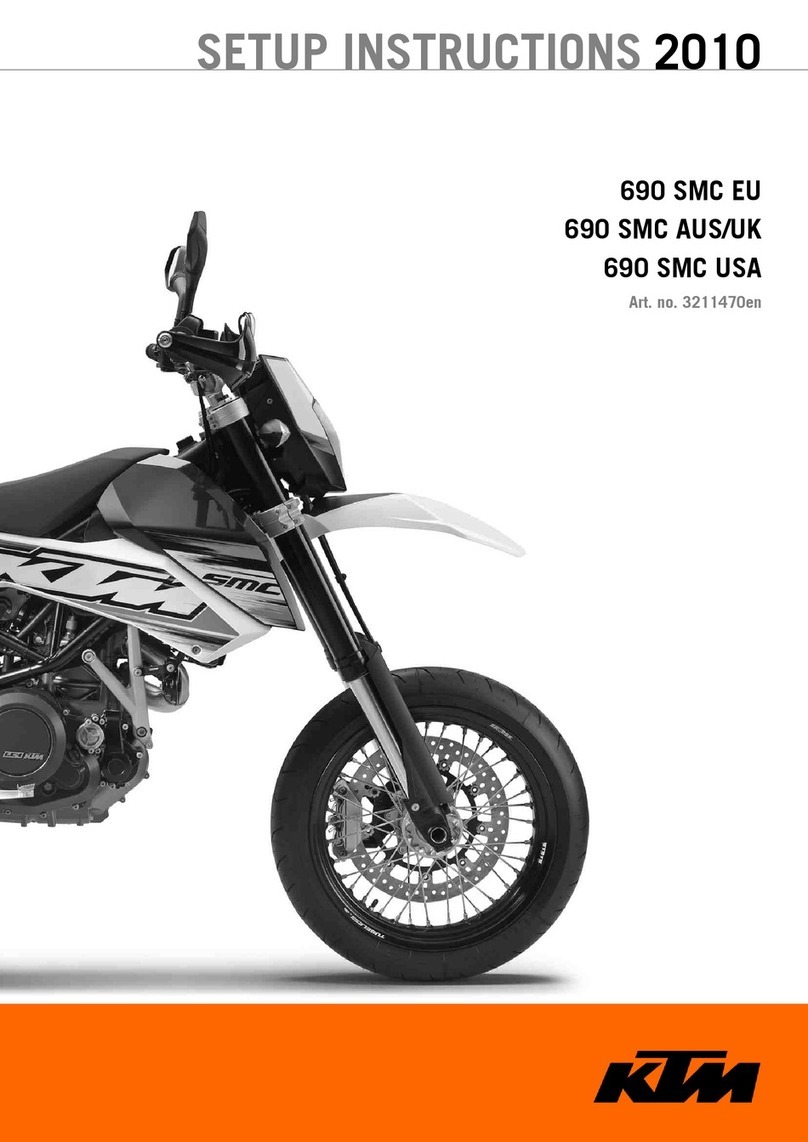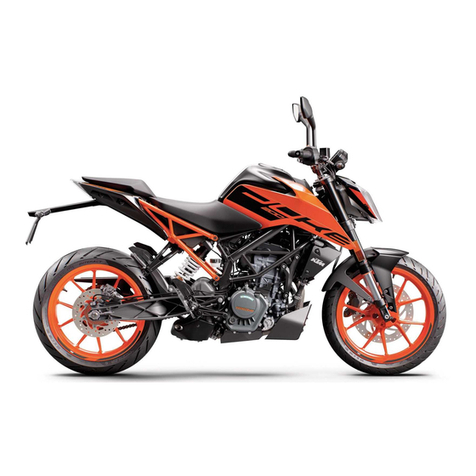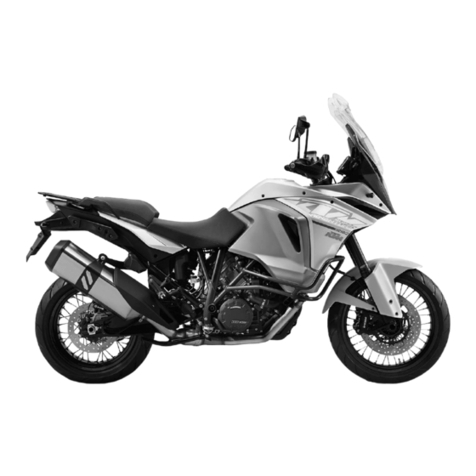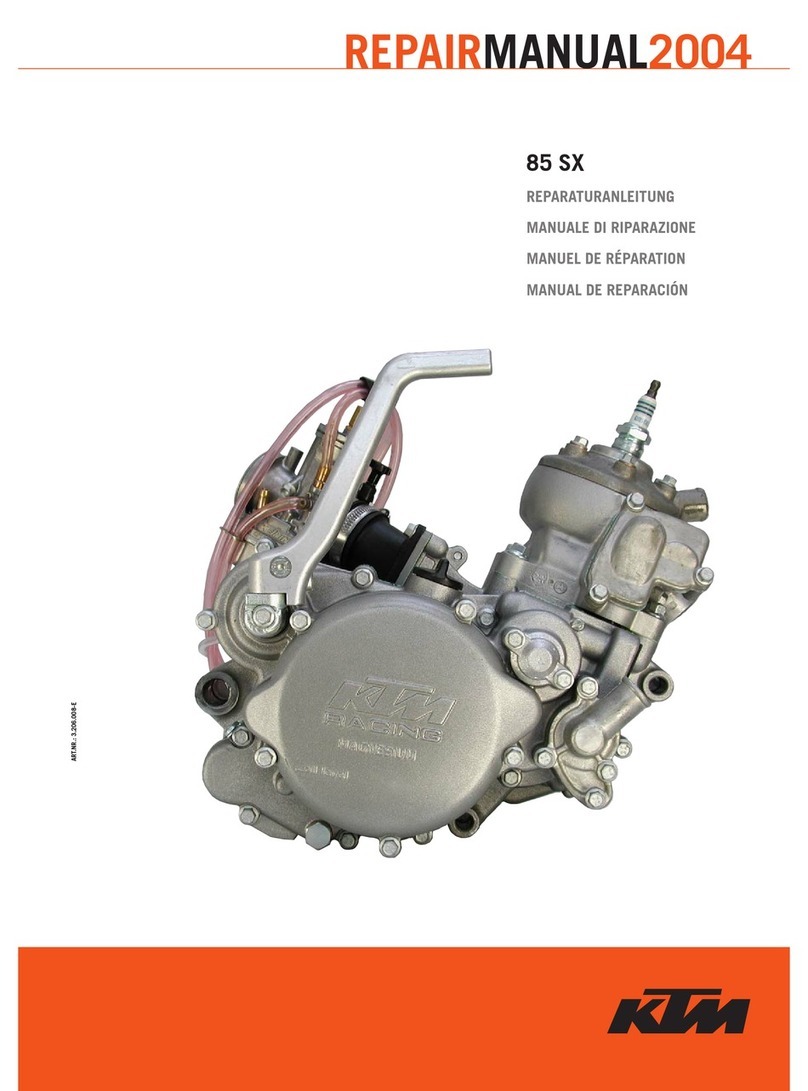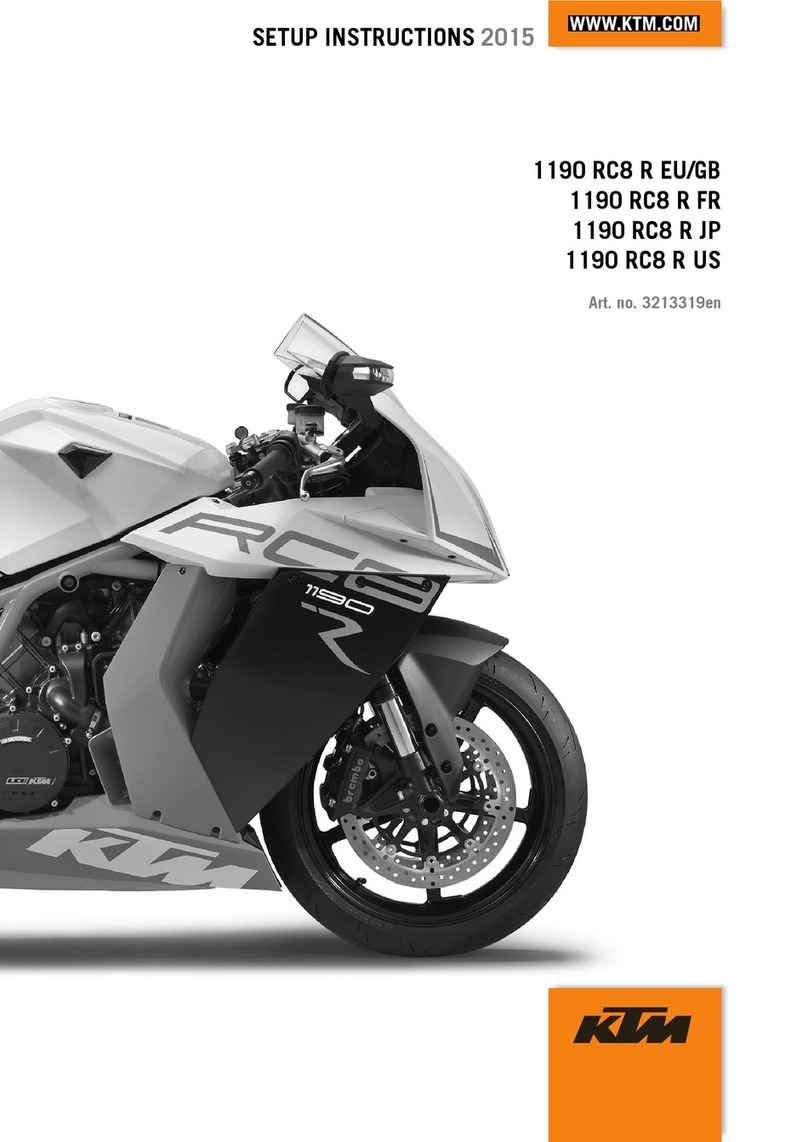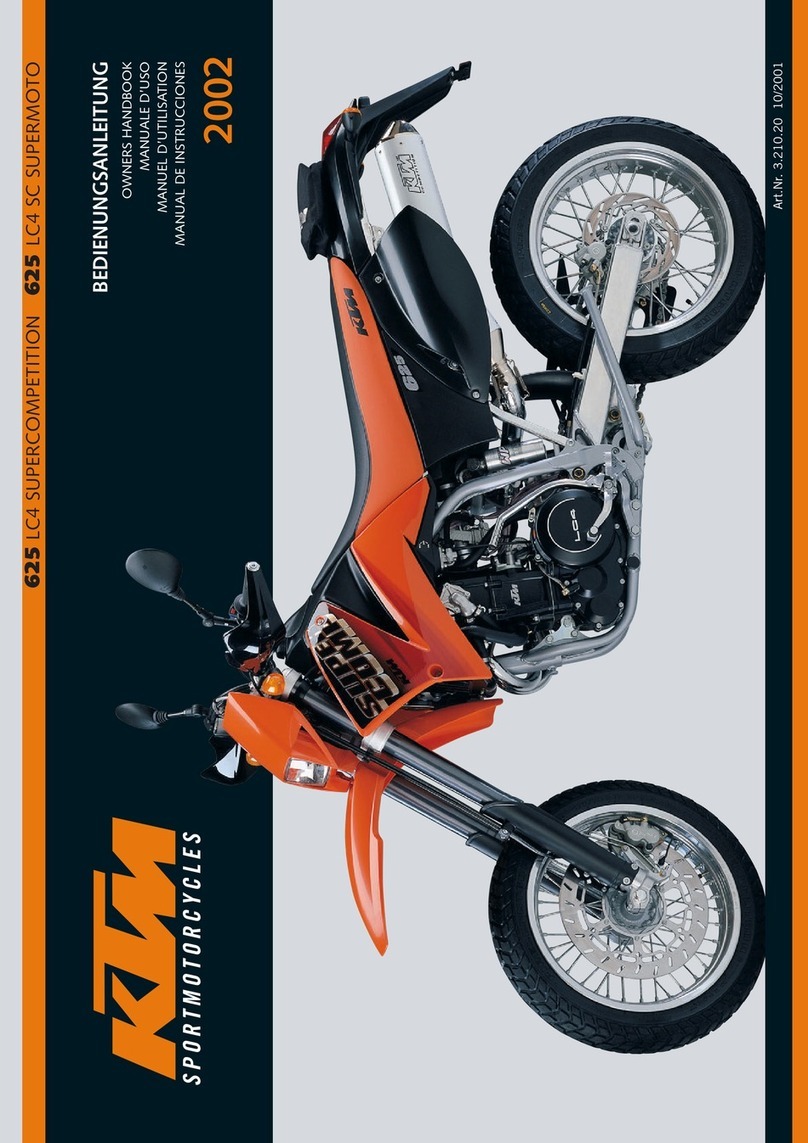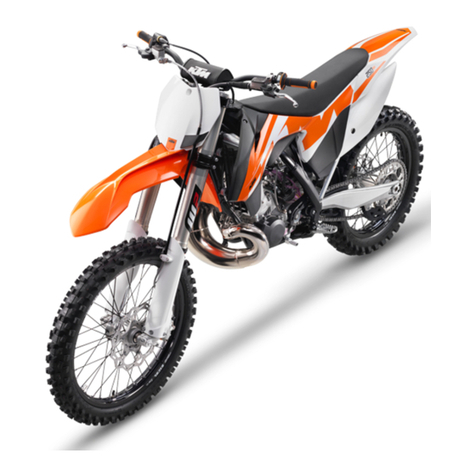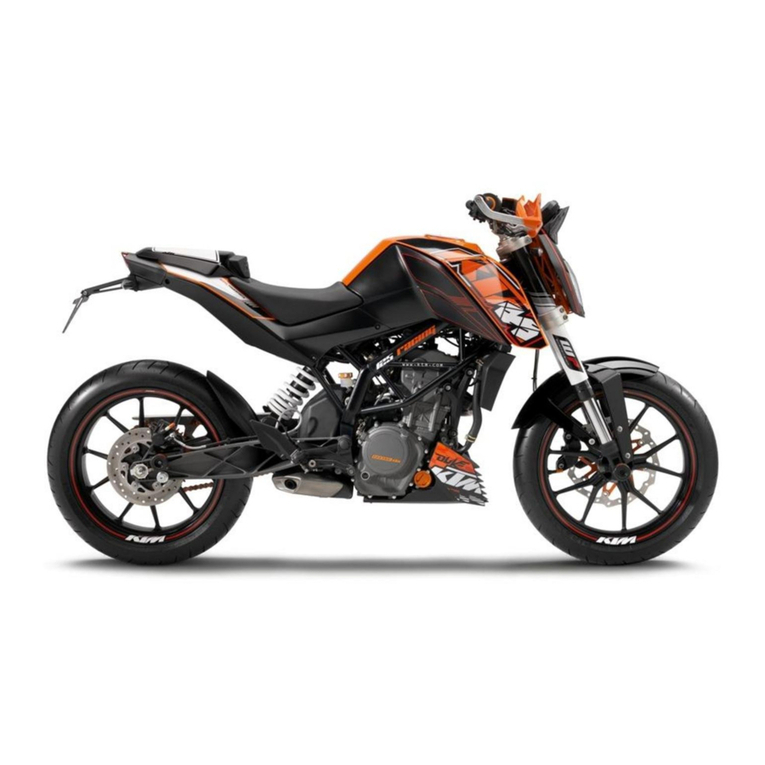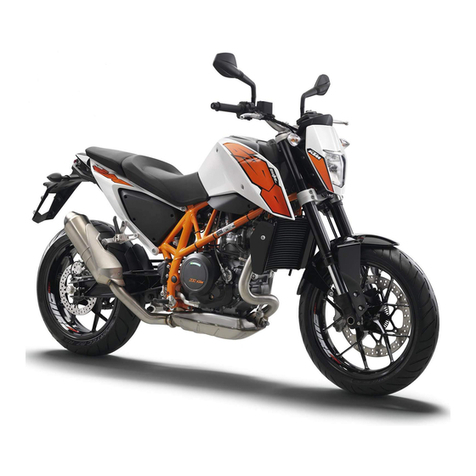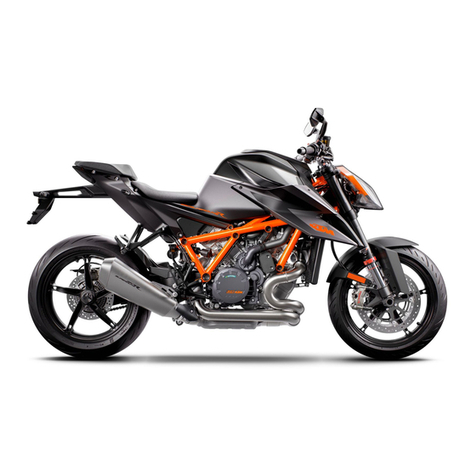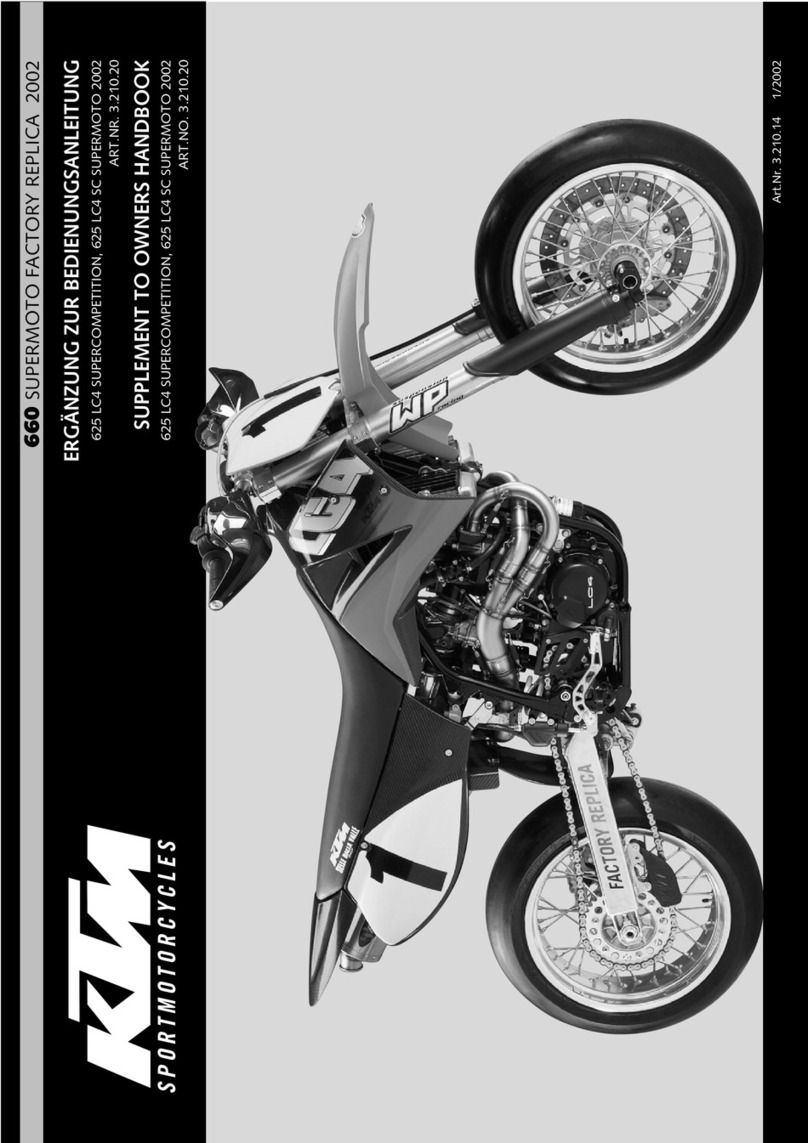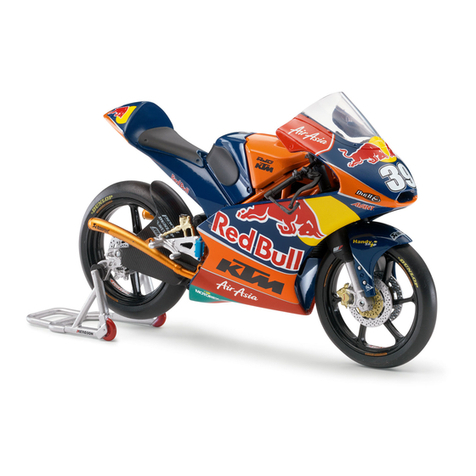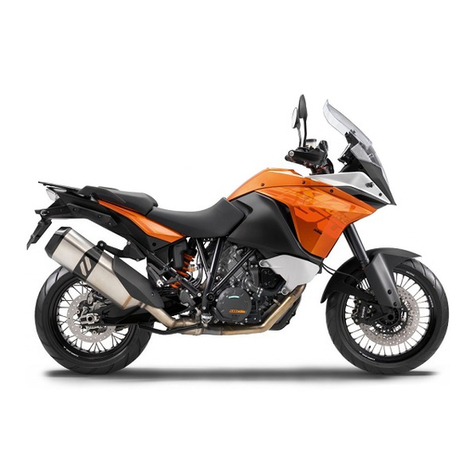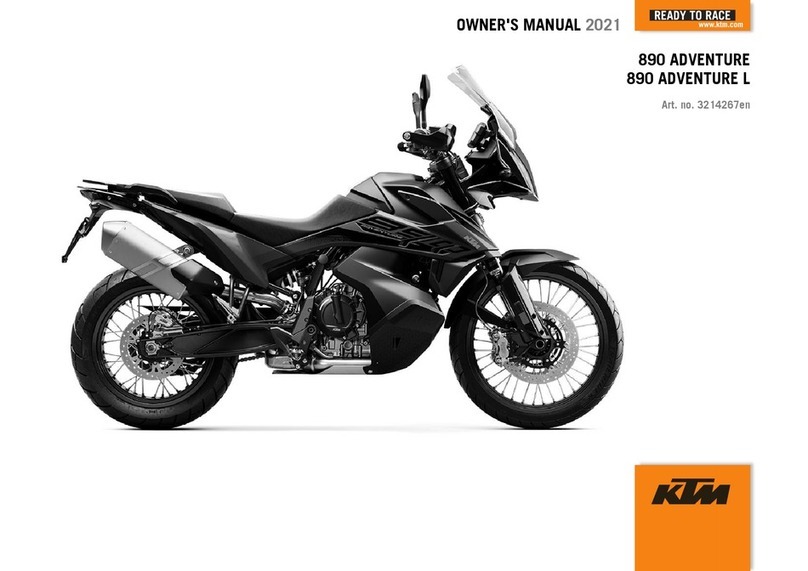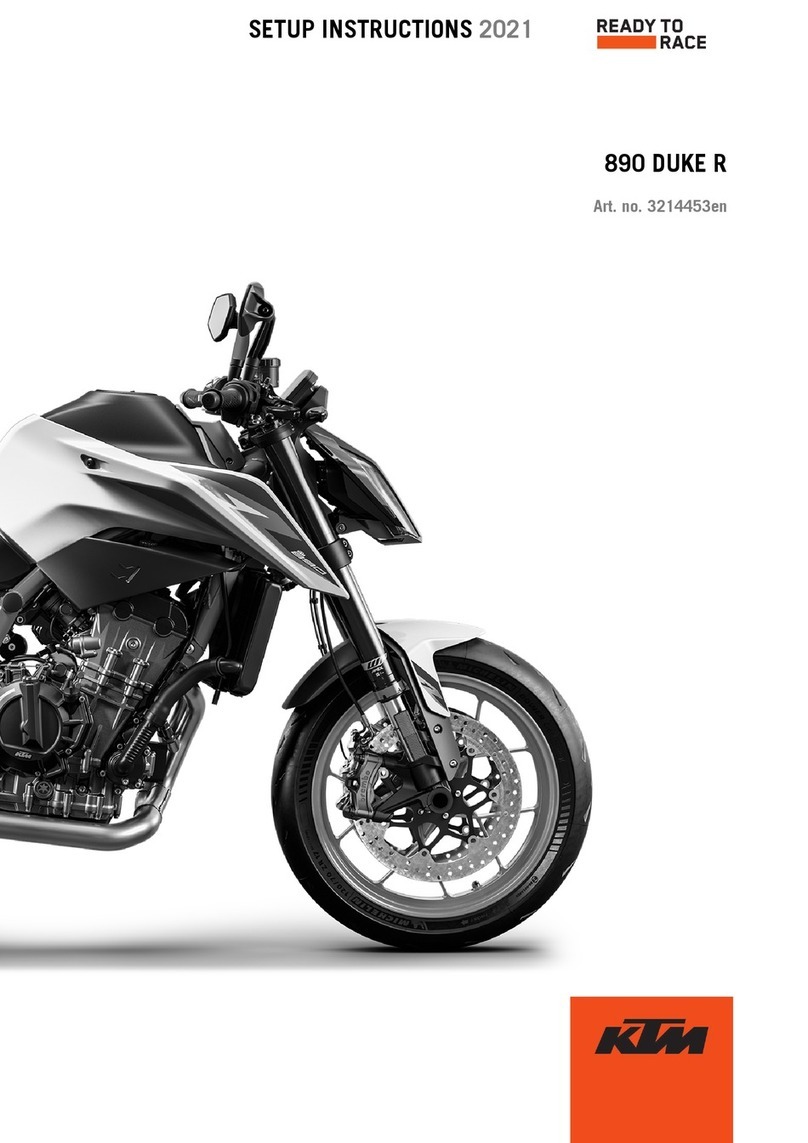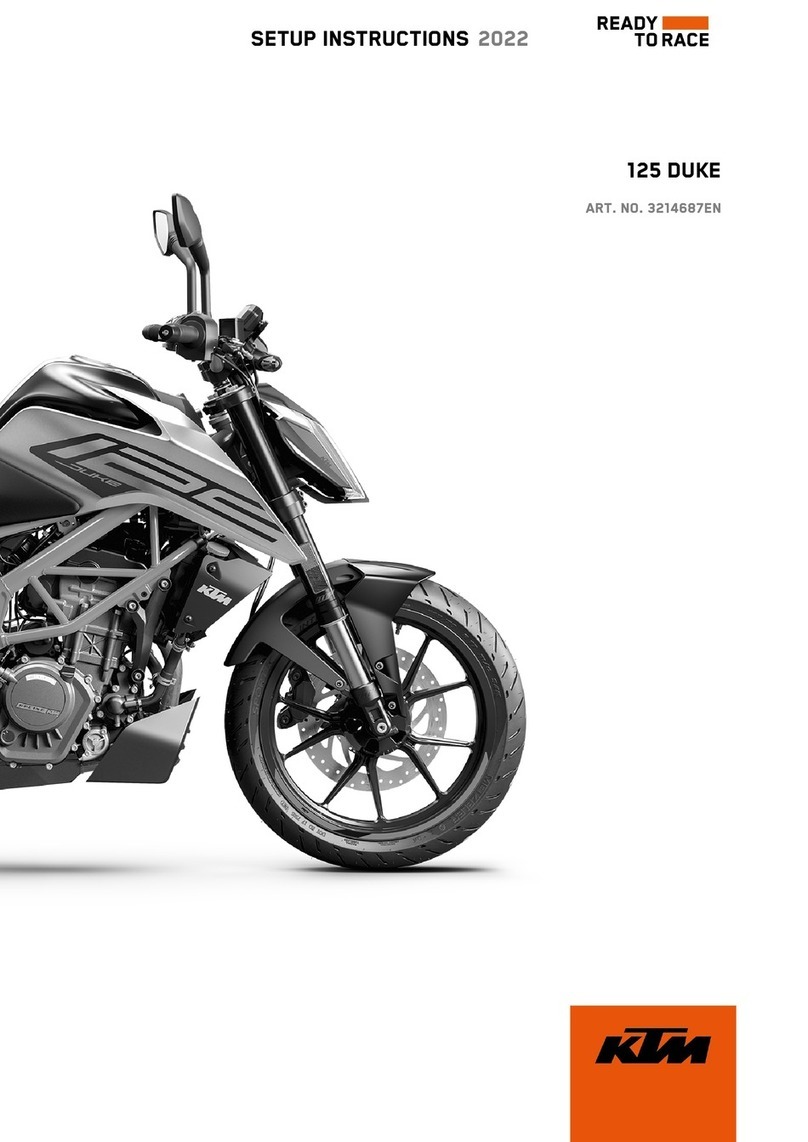ENGLISH
4
SERIAL NUMBER LOCATIONS . . . . . . . . . . . . . . . . . . . . . .5
Chassis number . . . . . . . . . . . . . . . . . . . . . . . . . . . . . . .5
Engine number, engine type . . . . . . . . . . . . . . . . . . . . . .5
OPERATION INSTRUMENTS . . . . . . . . . . . . . . . . . . . . . . . .5
Clutch lever . . . . . . . . . . . . . . . . . . . . . . . . . . . . . . . . . . .5
Choke lever . . . . . . . . . . . . . . . . . . . . . . . . . . . . . . . . . . .5
Hand brake lever . . . . . . . . . . . . . . . . . . . . . . . . . . . . . .5
Multi-functional digital speedometer . . . . . . . . . . . . . . . .6
Display . . . . . . . . . . . . . . . . . . . . . . . . . . . . . . . . . . . . . .6
Setting options in the display . . . . . . . . . . . . . . . . . . . . . .7
Cooling liquid temperature display . . . . . . . . . . . . . . . . .8
Indicator lamps . . . . . . . . . . . . . . . . . . . . . . . . . . . . . . . .8
Tachometer . . . . . . . . . . . . . . . . . . . . . . . . . . . . . . . . . .8
Ignition lock . . . . . . . . . . . . . . . . . . . . . . . . . . . . . . . . . .9
Combination switch . . . . . . . . . . . . . . . . . . . . . . . . . . . .9
Emergency OFF tip switch, light switch, starter tip switch . . .9
Storage compartment . . . . . . . . . . . . . . . . . . . . . . . . . .10
Filler caps . . . . . . . . . . . . . . . . . . . . . . . . . . . . . . . . . . .10
Seat lock . . . . . . . . . . . . . . . . . . . . . . . . . . . . . . . . . . . .10
Fuel taps . . . . . . . . . . . . . . . . . . . . . . . . . . . . . . . . . . . .10
Shift lever . . . . . . . . . . . . . . . . . . . . . . . . . . . . . . . . . . .11
Side stand . . . . . . . . . . . . . . . . . . . . . . . . . . . . . . . . . . .11
Center stand . . . . . . . . . . . . . . . . . . . . . . . . . . . . . . . . .11
Foot brake pedal . . . . . . . . . . . . . . . . . . . . . . . . . . . . . .11
Compression damping of fork . . . . . . . . . . . . . . . . . . . .11
Rebound damping of fork . . . . . . . . . . . . . . . . . . . . . . .12
Spring preload of the fork . . . . . . . . . . . . . . . . . . . . . . .12
Damping action during compression of shock absorber . . .12
Rebound damping of shock absorber . . . . . . . . . . . . . .12
Shock absorber's preload adjuster . . . . . . . . . . . . . . . . .13
Baggage carrier plate . . . . . . . . . . . . . . . . . . . . . . . . . . .13
Grips . . . . . . . . . . . . . . . . . . . . . . . . . . . . . . . . . . . . . . .13
Footrests . . . . . . . . . . . . . . . . . . . . . . . . . . . . . . . . . . . .13
GENERAL TIPS AND WARNINGS FOR STARTING THE
MOTORCYCLE . . . . . . . . . . . . . . . . . . . . . . . . . . . . . . . . .14
Instructions for initial operation . . . . . . . . . . . . . . . . . .14
Running in the LC8 engine . . . . . . . . . . . . . . . . . . . . . .14
Accessories and payload . . . . . . . . . . . . . . . . . . . . . . . .14
DRIVING INSTRUCTIONS . . . . . . . . . . . . . . . . . . . . . . . . .15
Check the following before each start . . . . . . . . . . . . .15
Starting when the engine is cold . . . . . . . . . . . . . . . . . .16
Starting when the engine is warm or hot . . . . . . . . . . .16
Braking . . . . . . . . . . . . . . . . . . . . . . . . . . . . . . . . . . . . .17
Stopping and parking . . . . . . . . . . . . . . . . . . . . . . . . . .17
Starting off . . . . . . . . . . . . . . . . . . . . . . . . . . . . . . . . . .17
Shifting/Riding . . . . . . . . . . . . . . . . . . . . . . . . . . . . . . .17
Fuel . . . . . . . . . . . . . . . . . . . . . . . . . . . . . . . . . . . . . . . .18
PERIODIC MAINTENANCE SCHEDULE . . . . . . . . . . . . . . .20
MAINTENANCE WORK ON CHASSIS AND ENGINE . . . . .22
Removing and remounting the seat . . . . . . . . . . . . . . .22
Tool set . . . . . . . . . . . . . . . . . . . . . . . . . . . . . . . . . . . .22
Adjusting the fork and shock absorber . . . . . . . . . . . .23
Adjusting compression damping of fork . . . . . . . . . . . .23
Adjusting rebound damping of fork . . . . . . . . . . . . . . .23
Adjusting the spring preload on the fork . . . . . . . . . . .23
Compression damping of shock absorber . . . . . . . . . . .24
Rebound damping of shock absorber . . . . . . . . . . . . . .24
Adjusting the preload of the shock absorber . . . . . . . . .25
INDEX
Page Page
